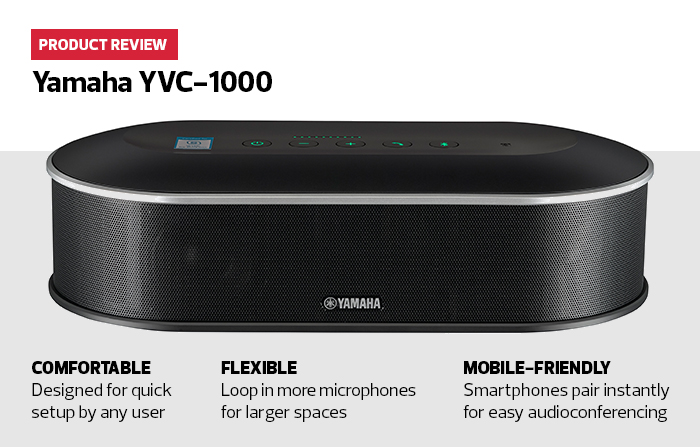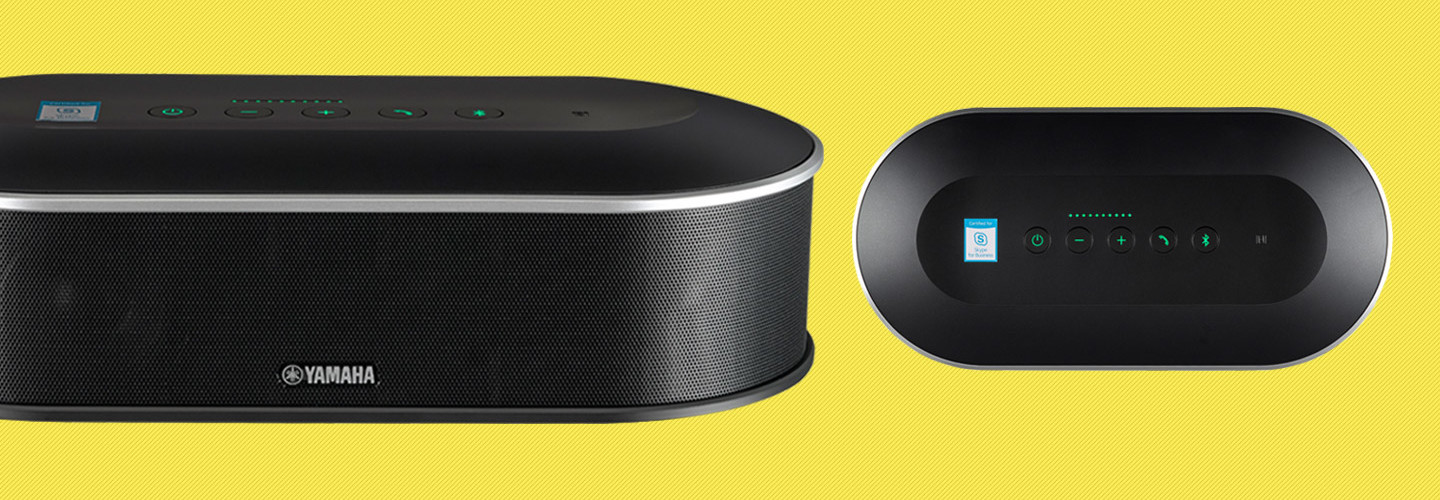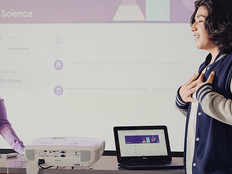Review: Yamaha YVC-1000 Speakerphone Gives K–12 Collaboration an Audio Boost
The Yamaha YVC-1000 speakerphone is designed to integrate easily into any environment, either to enhance existing communication devices or stand alone as the centerpiece of an independent system. Its ease of use, and the multiple roles it can play, make it perfect for a K–12 educational environment because connectivity and distance learning can be achieved with little or no IT support.
SIGN UP: Get more news from the EdTech newsletter in your inbox every two weeks!
Unit Supports Several Microphones and Connections
Featuring a base unit and an external, unidirectional microphone, the YVC-1000 also supports up to four more microphones to cover exceptionally large spaces. With USB ports for connecting to a computer and RCA jacks for adding sound through a television or monitor, it’s ready to fill almost any audio need within education.
Bluetooth capability supports wireless connectivity to a smartphone or tablet. When I waved an Android smartphone near the base station, it synced up in a few seconds via near-field communication. Thereafter, I could route audio from the smartphone through the YVC-1000, which provided deep and rich sounds. And, once synced, other people could join the call using the YVC’s external microphone.
Speaker Phone Optimized for Voices, Sounds
When connected to a computer, the YVC-1000 is designed to work with Skype for Business, which can detect the system and immediately integrate it as an audio option. It also works well with a variety of other videoconferencing tools.
The base unit has good sound quality, with a nice balance of base and treble that seems optimized for voices, but also works with other types of sound and music.

To test for audio quality, I placed the speakerphone in a variety of environments: a small office, a large conference room and a large open area. The device is smart, automatically optimizing its audio settings over time as it operates. Users can press a tuning fork button on the main unit to prompt the device to immediately test its own settings. This takes a few seconds but does not interrupt device operations.
The YVC-1000 speakerphone offers advanced audioconferencing and connectivity options in a simple package. Teachers and school administrators can tap into professional audioconferencing capabilities with almost no training, making this device an extremely apt addition to the classroom.
Voices Rise Above the Noise in Conference Room Test
The YVC-1000 speakerphone’s microphone includes an innovative technology called Human Voice Activity Detection, which enables it to pick out voices from noise. I put that special feature to the test.
Despite its simple interface, the Yamaha YVC-1000 speakerphone is packed with advanced features often found only in high-end or dedicated room-sized conferencing systems. But the device goes beyond that.
Yamaha has loaded an innovative technology called Human Voice Activity Detection into the YVC-1000. The technology is designed to distinguish human voices from other background noise, enabling people in meetings to speak normally, even if they are sitting far away from a microphone or are in a noisy environment. That extra noise could be anything from people working in an office to cars driving past on the street outside, or even the cooling fans on the computers in the same room.
The overall audio quality of the YVC-1000 was good in near-optimal lab environments. For a challenge, I created a terrible conference room environment that included two large cooling fans and a portable AC unit blasting away, a radio just outside the door playing techno music (without voices) and another speaker at the back of the room with traffic sounds on a loop.
In addition, participants were asked to sit all along the microphone’s maximum 32-foot range. The test involved people reading from a script (actually, a Tennessee Williams play) while the whole proceeding was remotely recorded over Skype.
The results were impressive. At no point was any speaker’s voice lost on the recording. Those sitting farther away sounded almost as clear as those sitting right near the microphone. And while the various background sounds were present, they did not interfere with the quality of people’s voices when talking, which the Yamaha YVC-1000 focused on and enhanced as they spoke.
For comparison, a manual tape recorder was left in the same room, placed near the YVC-1000 microphone. On that device, those sitting farther away were very difficult to understand, and the background noise at times completely drowned out the voices of those who were speaking, which is what people in the room said the environment really sounded like.
So, actually, the Yamaha YVC-1000 was able to record clearer voices and better sound quality than what existed in real life. That’s quite a feat for an inexpensive audioconferencing system.
Yamaha YVC-1000
Microphone: 100 to 20,000 Hertz Unidirectional
Sound Pickup Range: 32 feet
Power Consumption: 20 watts
Audio Inputs: 2 RCA Jacks, USB 2.0 Port, Microphone
Dimensions: 13.1x3.74x6.38 inches
Weight: 4 pounds








